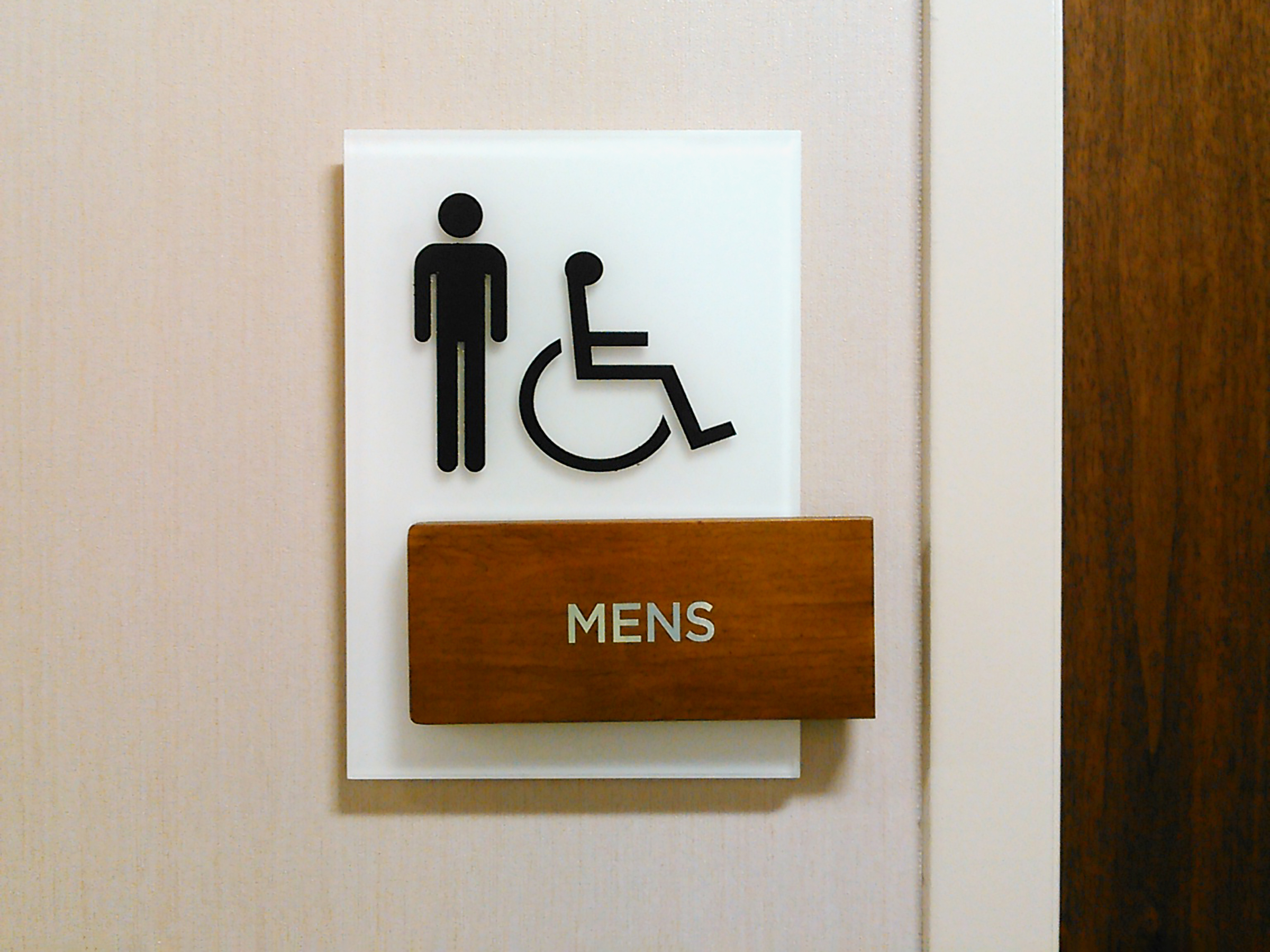Exactly How ADA Signs Enhance Accessibility for Everyone
Exactly How ADA Signs Enhance Accessibility for Everyone
Blog Article
ADA Signage: Making Sure Accessibility and Conformity in Public Spaces
ADA signage plays an indispensable function in assuring ease of access and conformity within public spaces, dramatically contributing to a comprehensive setting for people with disabilities. By sticking to ADA criteria, signage not only promotes navigation yet likewise emphasizes a company's dedication to variety and equality. As we discover the subtleties of ADA signs, from responsive features to develop details, it's essential to consider just how these elements coalesce to support the civil liberties of all customers. What are the common risks companies face in preserving compliance, and exactly how can future fads in signs remain to drive ease of access ahead?
Relevance of ADA Signs
In modern-day culture, the relevance of ADA signage prolongs beyond mere compliance with legal requireds to personify a dedication to inclusivity and availability for all individuals. These indicators are essential in creating settings where people with specials needs can navigate public rooms with the very same convenience and self-reliance as those without impairments. By offering standard and clear details, ADA signs guarantees that everyone can access centers, solutions, and information without obstacles.
The importance of ADA signs exists in its ability to boost the lifestyle for people with disabilities by advertising equivalent access. It removes the challenges that might or else impede their capacity to take part fully in area life. These indicators serve as noticeable indications of a company's commitment to variety and equal rights, showing wider societal worths that champion the rights and self-respect of all individuals.
Additionally, ADA signage plays an important role in public security. By guiding people to departures, restrooms, and various other vital centers, it guarantees that all individuals, no matter physical ability, can leave securely during emergencies. In recap, ADA signs is not simply a regulatory demand yet a powerful tool for cultivating a equitable and inclusive culture.
Trick Elements of Compliance

Placement is important; signs need to be mounted in areas that are reachable and easily visible. Typically, signage should be placed in between 48 and 60 inches from the ground to make certain access for both standing and mobility device individuals. Tactile elements, such as Braille, are essential for people with aesthetic disabilities, offering crucial info in a non-visual style.
High-contrast colors between the message and history are required to enhance readability for people with reduced vision. The ADA mandates certain contrast ratios to make certain clearness. Furthermore, personality dimension is a vital consideration, with minimum elevation needs determined by the watching distance to make certain readability from different angles.
Design Factors To Consider for Access
Designing accessible signs needs a meticulous strategy to ensure it fulfills the requirements of all users, especially those with specials needs. This involves taking into consideration different layout aspects that boost readability and functionality. Secret elements consist of the choice of typeface, color comparison, and responsive functions. Fonts must be sans-serif, with clear and straightforward letterforms, to facilitate simple analysis. The size of the message is just as vital, a knockout post with ADA standards recommending a minimal elevation based on checking out distance to ensure clarity.
Contrasting shades in between message and history are vital for presence, specifically for people with visual disabilities. Additionally, tactile elements, such as Braille and increased characters, are important for individuals that are blind or have reduced vision.
Moreover, the placement of signage plays a considerable duty in access. Indications must be set up in locations that are unobstructed and easily obtainable. Making sure that signage is mounted at ideal heights and angles allows all users, consisting of those utilizing wheelchairs, to connect with them properly.
Typical Errors to Prevent

An additional prevalent mistake is the incorrect positioning of signage. ADA standards define precise elevation and location demands to like it ensure that indications are reachable and quickly visible by all individuals, consisting of those using mobility devices. Neglecting these standards not only hinders accessibility yet also takes the chance of non-compliance with legal standards.
Furthermore, insufficient contrast in between message and background is a regular oversight. Ample contrast is essential for readability, especially for people with low vision. Designers often choose colors that are hop over to these guys visually enticing however do not have the necessary contrast, making the message hard to discern.
Finally, some designers stop working to include tactile aspects, such as Braille, which are crucial for individuals who are blind. Omitting these functions not just results in non-compliance with ADA policies however likewise limits accessibility for a segment of the populace that relies upon responsive information.
Future Trends in Signs
Advancements in modern technology and raising recognition of inclusivity are shaping the future trends in signage layout. Digital signage, for instance, is advancing to consist of interactive functions and real-time updates, which can be important in offering vibrant info in public spaces.
Another arising pattern is the utilization of increased reality (AR) to boost individual experience. AR-enabled signs can overlay digital details onto the physical setting, offering aesthetically impaired people with auditory or haptic feedback. ADA Signs. This innovation not just enhances access however likewise develops an engaging experience for all customers
Sustainability is also a considerable variable influencing signs fads. Green products and energy-efficient illumination remedies are being prioritized to straighten with international environmental objectives. In addition, developments in products science are resulting in the development of more weather-resistant and resilient signs.
Final Thought
ADA signage plays a vital function in guaranteeing accessibility and conformity within public areas by integrating responsive components, high-contrast shades, and critical positioning. The adherence to ADA standards not just assists in safe navigating for individuals with handicaps but additionally represents an organization's commitment to variety and inclusivity. By avoiding usual mistakes and welcoming future trends, public areas can remain to advance these worths, guaranteeing that the rights and self-respect of all individuals are appreciated and supported.
ADA signs plays an indispensable function in ensuring availability and conformity within public areas, dramatically contributing to a comprehensive atmosphere for people with handicaps. As we check out the subtleties of ADA signage, from responsive functions to develop intricacies, it's critical to think about how these components integrate to copyright the rights of all customers.In modern society, the significance of ADA signs prolongs beyond plain compliance with lawful requireds to symbolize a commitment to inclusivity and access for all people. By offering standard and clear information, ADA signage makes certain that everybody can access facilities, solutions, and information without obstacles.
ADA signage plays an essential duty in assuring ease of access and compliance within public areas by incorporating responsive elements, high-contrast shades, and strategic positioning. (ADA Signs)
Report this page